🌊 July vs August: the sea, harbour bathing spots and how to plan your swimming
Copenhagen is a rare European capital where you can legally and safely swim right in the harbour and on city beaches in the summer: the water is regularly monitored, there are official bathing zones, lifeguards and many Blue Flag beaches.
The sea and harbour bathing areas only become really comfortable in July–August — these are the months that guides and climate services call the best time for swimming in the Copenhagen area.
This article is a practical analysis: how July differs from August, where the water is subjectively ‘warmer’, how to fit swimming into a 3-5 day trip, and what to look for in terms of safety and budget.
🌡️ July vs August: water temperature, weather and ‘swimming experience’
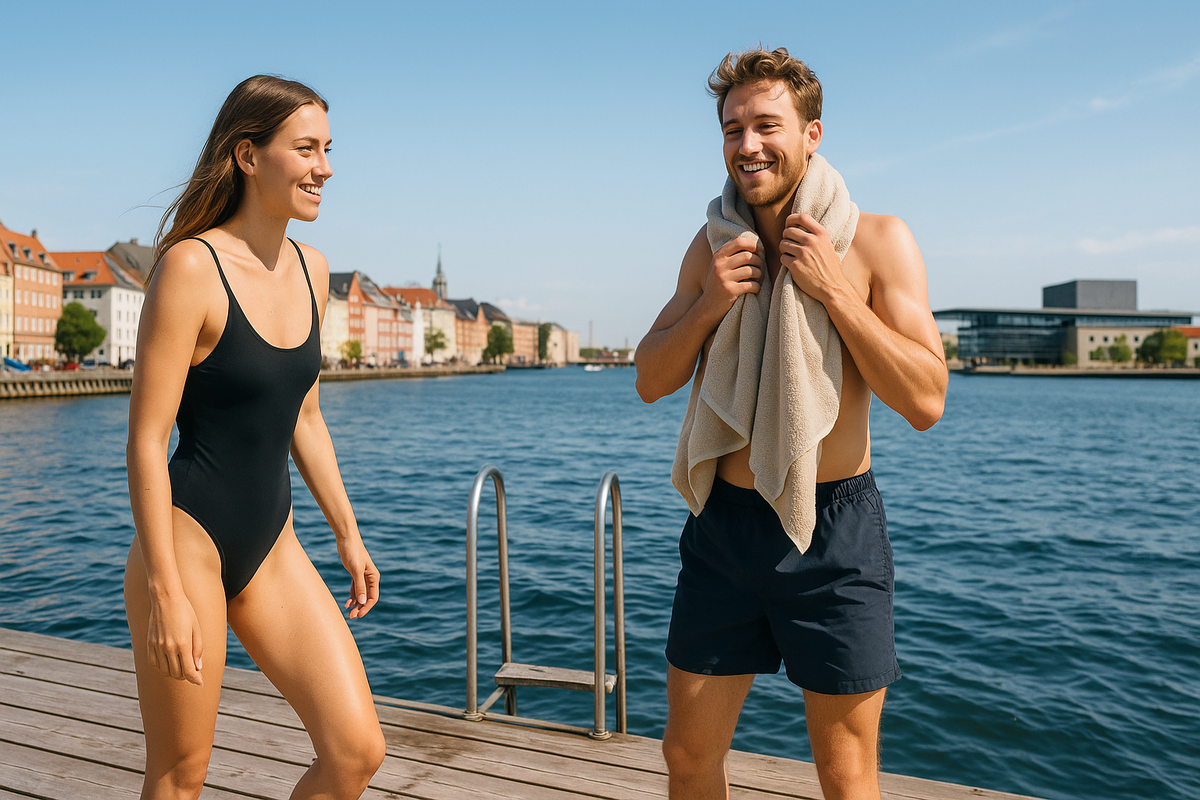
🌊 Water temperature in numbers
Looking at the average values for Copenhagen, the picture is as follows:
- July: average water temperature around 17–18 °C, typical range approximately 17–20 °C.
- August: average 18 °C, range the same 17–21 °C, sometimes slightly higher in the height of warm weather.
Climatic and tourist resources agree: ‘the best time for swimming is July and August’, September is still possible, but the water is starting to cool down significantly.
📌 How July differs from August ‘in terms of feel’
July:
- peak values for water temperature are more common,
- there is a greater chance of consistently warm weather,
- at the same time, it is the peak of the season: more tourists, higher accommodation prices and pressure on popular bathing areas.
August:
- the water remains warm, sometimes even feeling more comfortable due to the heat accumulated over the summer in the strait and lagoon;
- in the second half of the month, the tourist pressure drops slightly, and there is a feeling of ‘the end of the season’ — life is still summery, but without the pronounced July peak.
To simplify:
- if you want the best chance of hot weather and ‘everyone at the beach’ — look to the middle/second half of July;
- if you want slightly fewer crowds but still warm water — the first half/middle of August seems more balanced.
🏊 Where to swim: harbour baths vs beaches
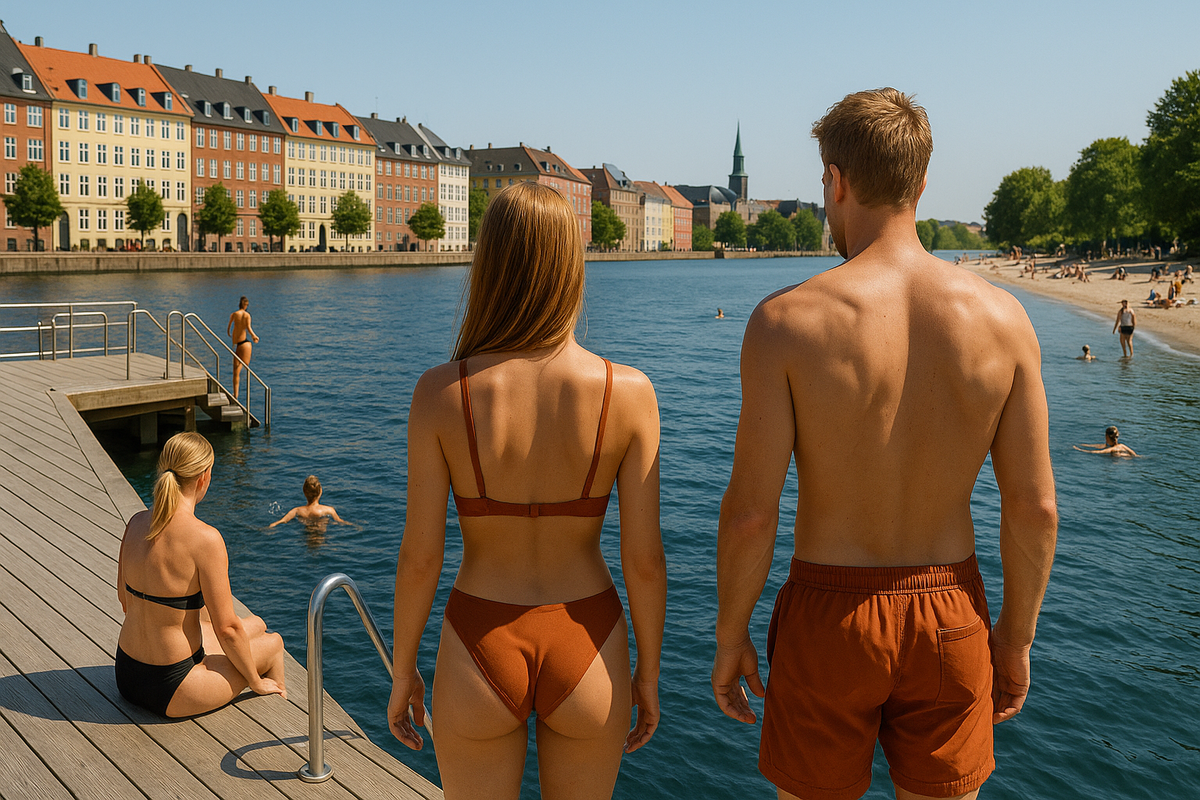
🚢 Harbour baths: swimming in the harbour itself
Copenhagen's signature feature is its harbour baths, urban bathing facilities in the cleaned harbour:
Key locations: Islands Brygge, Kalvebod Bølge, Fisketorvet Harbour Bath, Sluseholmen (Coral Bath), etc.
General format: free admission; platforms, stairs, often separate ‘pools’ of varying depths; during the season (approximately from early June to late August), lifeguards are on duty during the day and the water is tested daily.
Due to the protected water area, the water in the harbour often seems slightly warmer than on an open beach: there are no strong waves, less wind, and more of a ‘bathtub effect’ on sunny days.
Important: swimming in the harbour is only allowed in official areas and bathing areas — outside of these, it is both unsafe and formally prohibited.
🏖️ City beaches: sea, sand and ‘almost a resort’
For a classic ‘beach’ scenario:
- Amager Strandpark — the largest city beach, ~4.6 km of sand, a lagoon, several metro stations, Blue Flag, a gentle slope and separate areas for children and activities.
- Svanemølle Strand is a more compact, ‘homey’ beach north of the centre, convenient for family outings.
- Kastrup Sea Bath (Kastrup Søbad) is an architecturally beautiful wooden ‘circle’ above the water with a tower and platforms.
Most beaches and bathing areas around Copenhagen maintain very high water quality, and many have Blue Flag status, which means strict criteria for water and safety.
🧭 Mini ‘map’ of formats
| Type of place | Where to find it | For whom |
|---|---|---|
| Harbour baths | Islands Brygge, Kalvebod Bølge, Fisketorvet, Sluseholmen | Quick dip before/after the city, urban vibe |
| Large city beach | Amager Strandpark | Families, long beach days, picnics, sports |
| Compact city beaches | Svanemølle, other northern beaches | Relaxed time, local feel |
| Architectural sea baths | Kastrup Sea Bath and similar spots | Photos, atmosphere, jumping from platforms |
📅 How to fit swimming into 3–5 days: basic scenarios
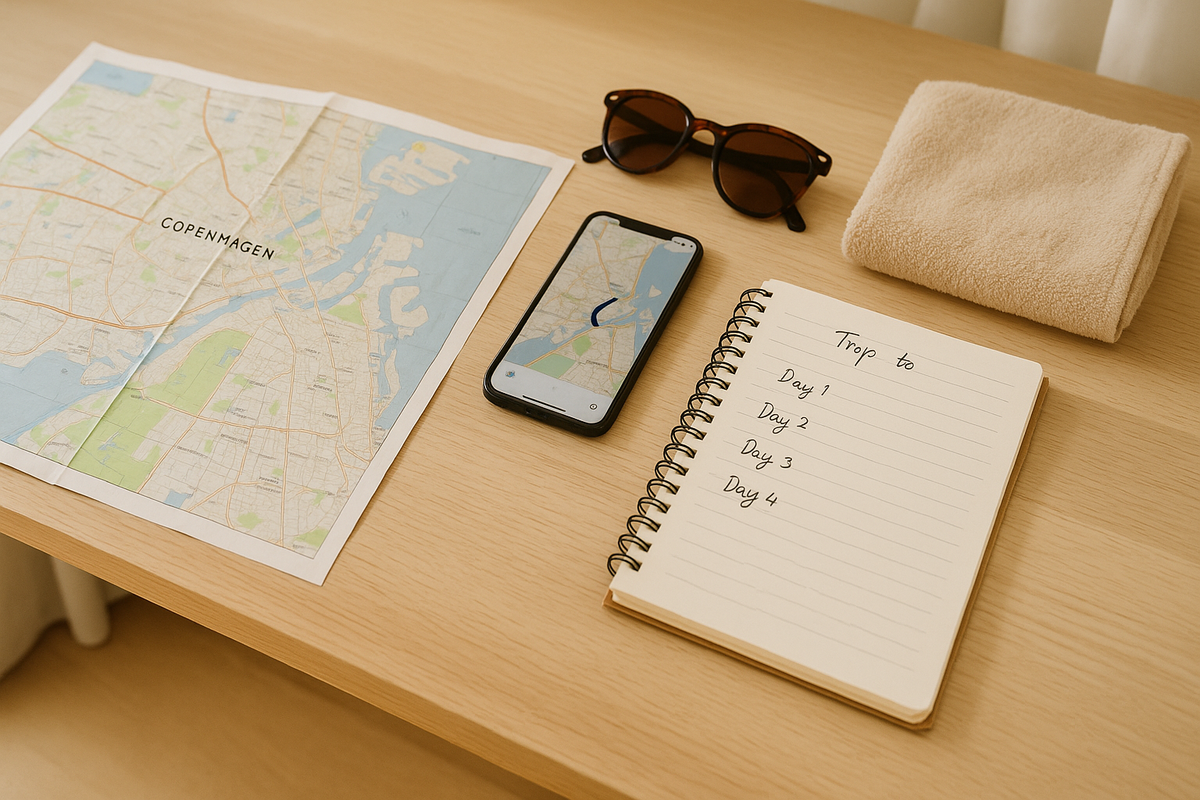
Key principle: swimming is not a separate holiday, but a module in a city trip.
⏰ Logic of the day: swimming + city
Morning:
- early swim in the harbour bathing area (Islands Brygge, Kalvebod Bølge) — fewer people, fresh air, the water has ‘woken up’;
- quick shower/change of clothes → breakfast in a café → head into the city.
Day:
- museums, walks in the city centre, lunch, shopping;
- on hot days, it's convenient to ‘hide’ in museums/cafés in the middle of the day to avoid overheating in the open sun.
Evening:
- picnic and sunset at Amager Strandpark or at any bathing beach;
- light evening swim for lovers of cool water;
- bar/street food by the water.
🗺️ Example for 3 days
Day 1
- Morning: harbour bath near your accommodation (e.g. Islands Brygge).
- Day: city centre, Nyhavn, canals.
- Evening: dinner and a walk along the water, without the beach — just to ‘get into the rhythm of the city’.
Day 2
- Morning/afternoon: Amager Strandpark — beach, lagoon, walks, street food/cafes.
- Evening: return to the centre, bar or evening harbour lights.
Day 3
- Morning: another bathing area (Kalvebod Bølge or Sluseholmen).
- Day: any museum/districts (Vesterbro, Nørrebro).
- Evening: depending on how you feel — another beach/bathing area or just a restaurant/promenade.
🗺️ Example for 5 days
In 5 days you can:
- try out 2–3 different bathing areas + 2 beaches;
- have 1–2 almost ‘beach’ days and 2–3 days with a more urban focus;
- adapt to the weather: spend the warmest and windless days at Amager Strand and Kastrup, and the cooler ones on short morning swims in the harbour.
🚩 Safety, flags and budget: what you need to keep in mind
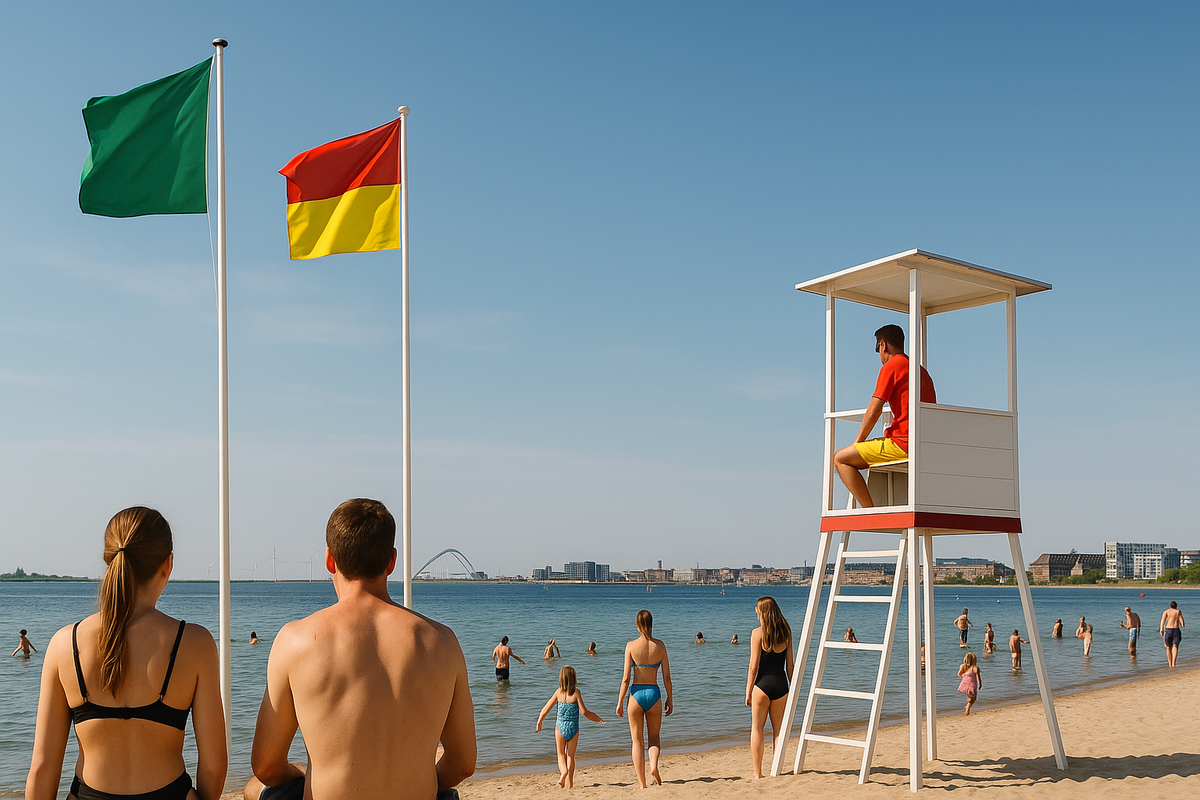
🛟 Flags and water quality
In Copenhagen, the bathing system is very formalised, which is a plus for tourists:
- Green flag — the water is clean and safe for swimming.
- Yellow flag — measurements could not be taken / algae or jellyfish may be present, swimming is possible but caution is advised.
- Red flag — swimming is prohibited: the water does not meet standards, there is a risk of intestinal infections after heavy rains or emergency discharges.
- Red and yellow (two colours) — lifeguards are on duty here.
After heavy rains, the storm drain and sewer system can become overwhelmed — some of the water drains into the strait and harbour, and then red flags are raised at a number of beaches and harbour baths and swimming is temporarily closed.
📌 Practical conclusion:
- Always check the flag and the information board on site.
- If you are planning a ‘beach day’ after a night of heavy rain, have a backup plan (museums, a walk, or just a picnic without swimming).
A separate reminder:
It only makes sense to swim in official areas — the water quality is monitored there, and there are flags and infrastructure.
💰 Budget: where does the money go if the water is free?
Swimming itself is one of the cheapest forms of recreation in Copenhagen:
- admission to beaches and harbour baths is free;
- you only need to spend money on: transport (metro/bus/bike rental), food/coffee/street food, options such as renting sun loungers, SUPs, kayaks.
But July–August is:
- high season for hotels and airfares, especially in July;
- increased demand for accommodation by the water and in ‘Instagrammable’ areas.
💡 How to optimise your budget:
- consider weekdays — hotel prices are often lower than on Friday–Sunday;
- book accommodation in advance if you are planning to visit in July;
- use a city pass / Copenhagen Card if you plan to visit museums and use public transport a lot — this way, swimming is included in the price of the pass, which will already have paid for itself.
✅ Conclusion: July or August — how to decide which is right for you
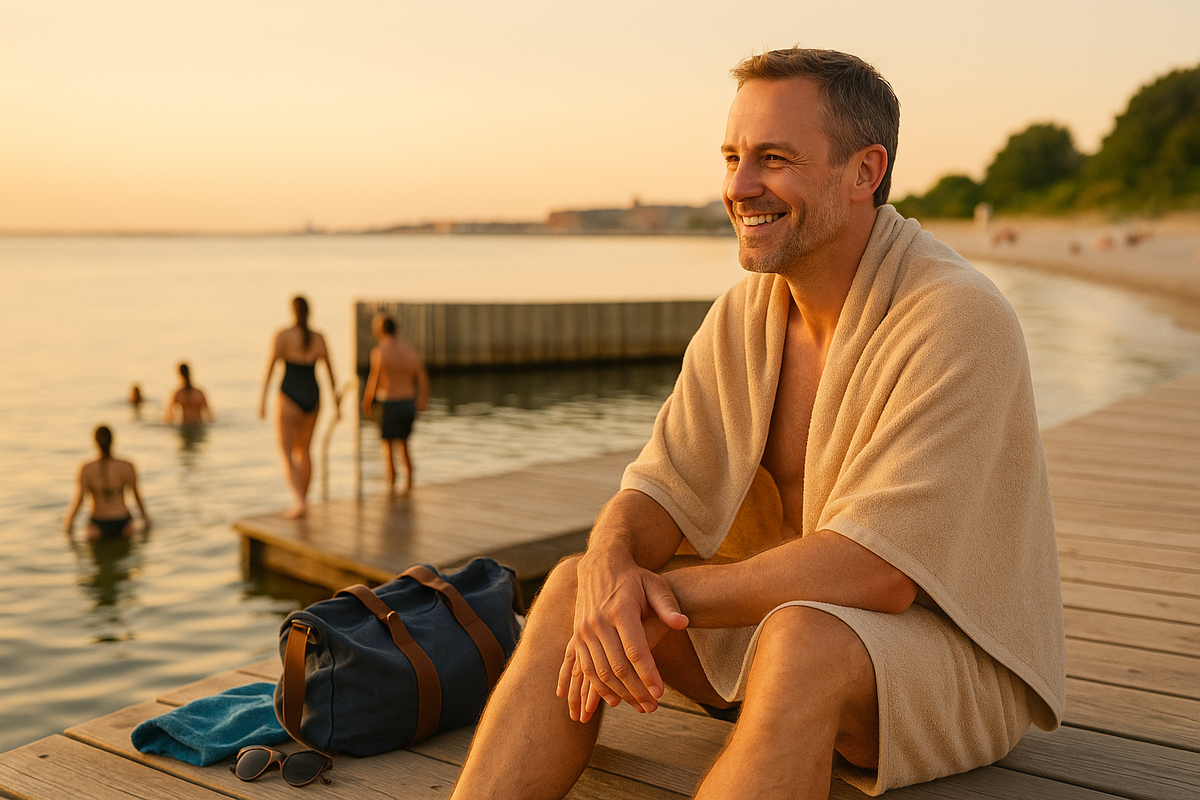
To sum up:
- July — maximum chance of warm water and hot days, but also maximum crowds + high prices.
- August — almost the same water temperature (sometimes even slightly more pleasant), but by the end of the month, the pace slows down a little and the crowds are slightly smaller.
July–August in Copenhagen will suit you if:
- you are ready for the concept of ‘fresh, not hot’ — refreshing 17–20 °C, not warm soup;
- you like to combine city and water: morning swim → daytime urban → evening on the beach/at the harbour;
- you are okay with having to watch the flags, check the forecast and adjust your plans a little to the weather.
Then 3–5 days in Copenhagen in the summer can easily turn into a half-urban, half-beach format: with clean water, urban landscapes, harbour baths and the feeling that you have ‘lived by the sea’ without leaving the capital.
❓FAQ
💡 In July, there is a higher probability of truly warm days and ‘peak’ water temperatures, but this is also when crowds and prices are at their highest. In August, the water is usually no colder, sometimes even more comfortable due to the accumulated heat, and there are slightly fewer people, especially in the second half of the month — for many, this is a more balanced option.
💡 It feels refreshing and invigorating: some people are happy to ‘jump in and swim’, while others are more comfortable with a short swim. If you are used to the warm southern sea, it is worth noting that Danish swimming is about a ‘coolcation’ and a feeling of freshness, rather than a ‘warm bath’.
💡 Harbour baths are convenient for the ‘city + quick swim’ format: closer to the centre, urban views, the water is subjectively a little warmer, and there is strict quality control. Beaches like Amager Strandpark are more suitable for a full half-day at the beach with sand, picnics and walks along the water — it's better to set aside a separate block of time for them.
💡 A working plan: a morning swim at the nearest harbour bathing area → a day of museums, cafés and walks → an evening on the beach or by the water with the sunset and another short swim. With 5 days, you can try out 2-3 different bathing areas and 1-2 beaches, adjusting to the forecast: spend the warmest and quietest days at the sea, and the rest on a ‘city + short swim’ format.
💡 Safety is linked to official bathing zones and a flag system: green means you can swim, yellow means swim with caution, and red means swimming is prohibited (often after heavy rain or when there is a risk of pollution). If you follow the flags and do not go into the water outside the official zones, swimming in the harbour is a controlled and completely safe activity that complements your city break.





0 comments
Log in to leave a comment